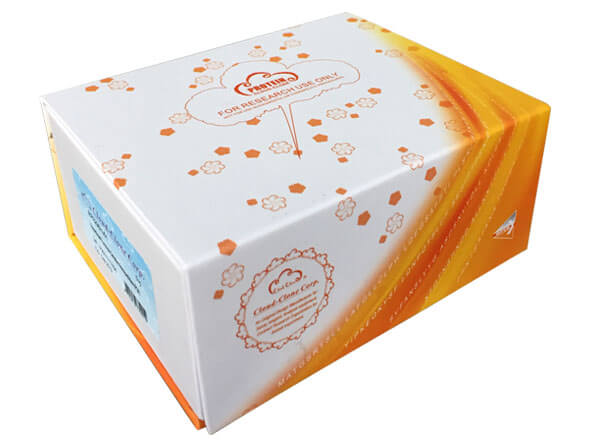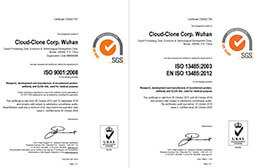Recombinant Cardiotrophin Like Cytokine Factor 1 (CLCF1)
Cat# RPC389Ra01-1mg
Size : 1mg
Brand : USCN
Recombinant Cardiotrophin Like Cytokine Factor 1 (CLCF1)
CLC; NR6; BSF3; CISS2; NNT1; Novel Neurotrophin-1; B Cell-Stimulating Factor-3
- Product No.RPC389Ra01
- Organism SpeciesRattus norvegicus (Rat) Same name, Different species.
- SourceProkaryotic expression
- HostE.coli
- Endotoxin Level<1.0EU per 1µg (determined by the LAL method)
- Subcellular LocationSecreted
- Predicted Molecular Mass26.2kDa
- Accurate Molecular Mass26kDa(Analysis of differences refer to the manual)
- Residues & TagsLeu33~Phe230 with N-terminal His Tag
- Buffer FormulationPBS, pH7.4, containing 0.01% SKL, 5% Trehalose.
- TraitsFreeze-dried powder
- Purity> 97%
- Isoelectric Point9.3
- Applications Positive Control; Immunogen; SDS-PAGE; WB.
If bio-activity of the protein is needed, please check active protein. - Download Instruction Manual
- UOM 10µg50µg 200µg 1mg 5mg
SEQUENCE of the Recombinant Cardiotrophin Like Cytokine Factor 1 (CLCF1)

USAGE of the Recombinant Cardiotrophin Like Cytokine Factor 1 (CLCF1)
Reconstitute in ddH2O to a concentration of 0.1-0.25 mg/mL. Do not vortex.
STORAGE of the Recombinant Cardiotrophin Like Cytokine Factor 1 (CLCF1)
Avoid repeated freeze/thaw cycles. Store at 2-8°C for one month. Aliquot and store at -80°C for 12 months.
STABILITY of the Recombinant Cardiotrophin Like Cytokine Factor 1 (CLCF1)
The thermal stability is described by the loss rate. The loss rate was determined by accelerated thermal degradation test, that is, incubate the protein at 37°C for 48h, and no obvious degradation and precipitation were observed. The loss rate is less than 5% within the expiration date under appropriate storage condition.






